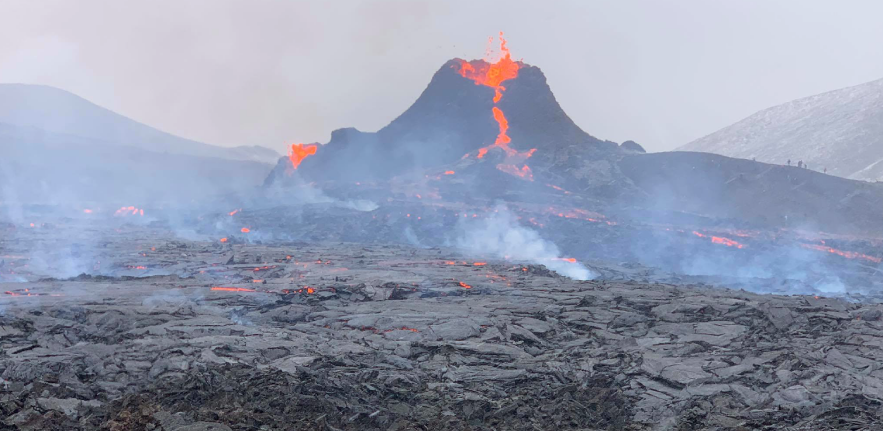
Submitted by Dr C.M. Martin-Jones on Thu, 13/05/2021 - 15:58
Just hours after Dan Roberts, Masters student at Cambridge Earth Sciences, handed in his dissertation on the seismicity of Reykjanes Peninsula, Iceland, the volcano in his study area erupted…
Dan’s Master’s project used Cambridge-developed software to accurately map out earthquake tremors in the Reykjanes Peninsula – where the ongoing eruption is occurring.
The data, collected during the summer of 2020, gives a rare snapshot of earthquake swarms and geological conditions in the runup to what is a major eruption. “There’s very little information out there that gives this kind of detail in the time period leading up to an eruption – future research using this data promises to expand our knowledge of the relationship between seismicity and eruptions that follow.”
Dan’s research is also helping scientists understand how surface ruptures are related to regional geological processes like plate spreading, as well as more complex local forces including smaller scale seismicity. For the project, Dan analysed earthquake locations during June and August 2020 – looking for patterns in the periodicity of shaking in time and space.
Previous studies in the region have pinpointed the location of earthquakes to within one to two kilometres, but Dan managed to hone in on them with an uncertainty of less than 500 metres. This detailed picture has helped him hone in on the local contributions to seismicity.
The site of the eruption is about 10 kilometres from the nearest town and approximately 30 kilometres from the capital, Reykjavik, so poses little danger other than toxic gas emissions. While the immediate region is pretty low risk at present, there is evidence in the geological record that extensive lava flows have occurred across the Reykjanes Peninsula in the past. Larger eruptions could happen in the future, and data like this helps us understand and prepare for them.
Read more about Dan’s project on our blog.
More research from the Volcano Seismology Group:
Ágústsdóttir, Thorbjörg, et al. “Intense Seismicity During the 2014–2015 Bárðarbunga‐Holuhraun Rifting Event, Iceland, Reveals the Nature of Dike‐Induced Earthquakes and Caldera Collapse Mechanisms.” Journal of Geophysical Research: Solid Earth 124.8 (2019): 8331-8357.
Woods, Jennifer, et al. “Evolution of a lateral dike intrusion revealed by relatively-relocated dike-induced earthquakes: The 2014–15 Bárðarbunga–Holuhraun rifting event, Iceland.” Earth and Planetary Science Letters 506 (2019): 53-63. Accompanying video here.

